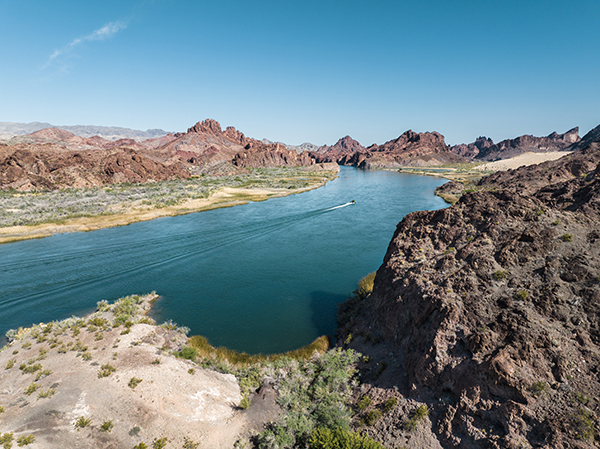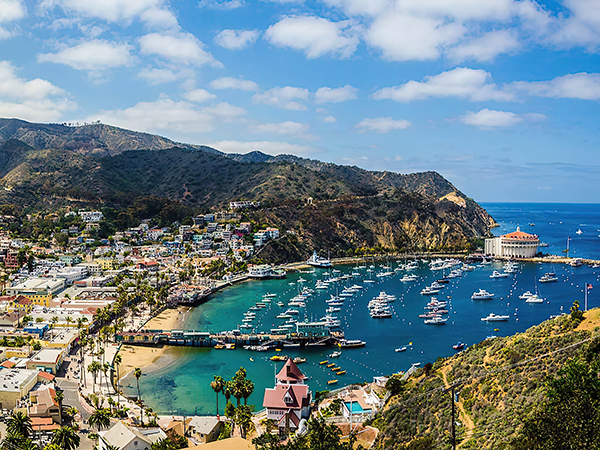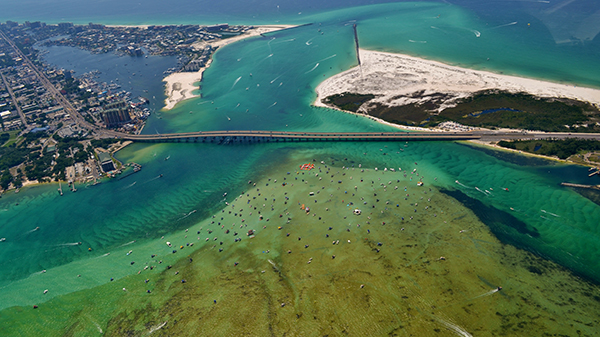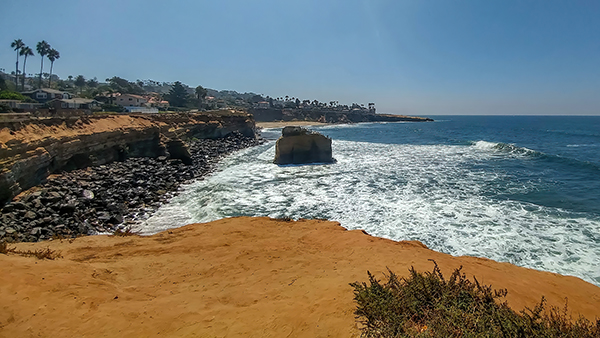Biscayne Bay National Park
Location: By boat, Biscayne National Park is only a 15-minute run from downtown Miami.
The Boating: This massive 250 square mile park is 95 percent water and is only accessible by boat. Despite being located close to a major city, there is a pristine collection of inshore and offshore reefs, scenic islands called keys, lighthouses and underwater wrecks. It’s easy to run aground here, so keep a close eye on your GPS display. Learn to “read” the water by following the phrase: brown, brown, run aground, white, white, you just might (run aground), blue, blue sail on through.
The Fishing: The light tackle fishing within the park is fantastic for species like snapper, grouper, snook, triggerfish, barracuda, tarpon, bonefish and permit. There are several areas where fishing and taking spiny lobster is forbidden, so make sure to get a chart showing these areas. The size and bag limits within the park for some species differ from the state laws of the surrounding waters, so make sure you have the most up-to-date info, which can be found on the park’s fishing website.
Where to Stay: Camping is available on Elliott Key and Boca Chita Key. Dockage on the two islands is $25 on Fridays, Mondays, and holidays. An additional $35 camping permit is needed even if you spend the night on the boat. Dockage and camping are first-come, first-serve, and they don’t take reservations. For more information, go to the park’s website.
Things to Do: Snorkeling is the number one activity here since most park attractions are underwater. Be careful not to damage fragile reefs like fan coral or underwater structures like sponges when anchoring. Use mooring buoys when available. There are several underwater trails and wrecks to explore. Check out the six remaining houses out on the water that have survived hurricanes and demolition at iconic Stiltsville.

Lake Havasu
Location: Lake Havasu is located on the border of Arizona and California on the Colorado River. It’s about a three-hour drive from Phoenix or Las Vegas and about four hours from Los Angeles, on the northwestern limits of the Sonoran Desert.
The Boating: Lake Havasu is a reservoir formed in 1938 after the construction of the Parker Dam. The dam created 450 miles of shoreline, and the water level remains remarkably constant. Topock Gorge is one of Havasu’s most scenic areas, which locals call Little Grand Canyon. Its waters are about 10 degrees cooler in summer, offering respite from the heat.
The Fishing: Lake Havasu is regarded as one of the top 100 bass lakes in the United States. The panfish grow huge here. In 2021, a 6-pound, 4-ounce redear sunfish was caught here that set an IGFA World Record, beating the previous record what was also caught here.
Where to Stay: Several hotels in Lake Havasu City have dockage, so it’s easy to jump in your boat and go. For a free guide to the area, check out golakehavasu.com. The signature feature of Lake Havasu City is London Bridge, which was purchased from the city of London, disassembled, and transported to the desert in 1971 to be a drawing card for the newly created city.
Things to Do: All watersports are popular here, and some narrower canyons are perfect for kayaking and paddleboarding. There are about 300 scheduled events inLake Havasu City, which coincidentally, is the same number of sunny days here.

Santa Catalina Island
Location: Catalina, in Southern California, is about 90 miles west of San Diego and Newport Beach. It is accessible by boat or helicopter only.
The Boating: This trip is best left to experienced boat drivers with seaworthy boats that have plenty of range. The best times to go are spring and fall when the seas are calmer. Avoid going in winter when storms are common. There are several choices for dockage, like Two Harbors and Avalon Harbor, where gas and
other marine services are available.
The Fishing: Catalina Island is a legendary fishing spot that gives anglers a great chance to catch calico bass, yellowtail, white sea bass, tuna, and sharks like high-flying makos. There are several no-take sanctuaries around the island, so it’s a good idea to have a GPS chart that highlights where to avoid them. For more information on fishing, go to the California DFW website.
Where to Stay: There are several hotels on the island, but for the more adventuresome boater, there are also primitive boat-in campsites. A comprehensive guide that details all the information needed to visit is visitcatalinaisland.com.
Things to Do: Popular activities include scuba diving, hiking, zip-lining, hitting the shopping district or dining in one of the local restaurants. There’s even a golf course and a casino.

Chotawhatchee Bay
Location: Located near Destin in Florida’s Panhandle, Choctawhatchee Bay is one of the boating jewels on the Emerald Coast.
The Boating: Stretching 27 miles long, Choctawhatchee Bay is a great boating destination and jumping-off point for exploring the area. There are bayous to explore and plenty of room for watersports. Just west of the Mid Bay Toll Bridge is Crab Island, which isn’t an island; instead, it’s one of America’s greatest sandbar hangouts.
The Fishing: On the grass flats and in the bayous, there is excellent fishing for trout and redfish, and just out of the inlet in Destin is offshore action in the Gulf of Mexico. In early spring, there’s a cobia run, which happens just off the beach.
Where to Stay: There are numerous places to stay on the bay with dockage, like Sandestin, a self-contained village with space for boats at the Baytowne Marina.
Things to Do: The area is home to some of the best beaches in Florida, and along the adjacent stretch of the Intracoastal Waterway, boaters can beach their boats and explore. There are plenty of waterside restaurants, shopping opportunities, and world-class golf courses.
.jpg)
Sunset Cliffs Natural Park
Location: Heading out of San Diego Harbor and taking a right will take boaters to Sunset Cliff Natural Park.
The Boating: Start with a tour of San Diego Harbor, where aircraft carriers dock, then head to the scenic cliffs. Because they are directly on the Pacific Ocean, caution is needed when the surf is up. Beaching a boat is not permitted, but there are places in nearby Mission Bay where it is allowed. Kelp is ever-present here, and patches should be avoided.
The Fishing: There are lots of rocky structure and underwater plants, which are good fish habitat for calico bass, sheepshead and opaleye.
Where to Stay: The Mission Beach area has several hotels near the public marina.
Things to Do: Many beaches and attractions, like SeaWorld, are in the Mission Beach area. It’s also close to San Diego’s Old Town.
Back to Blue Life
Location: By boat, Biscayne National Park is only a 15-minute run from downtown Miami.
The Boating: This massive 250 square mile park is 95 percent water and is only accessible by boat. Despite being located close to a major city, there is a pristine collection of inshore and offshore reefs, scenic islands called keys, lighthouses and underwater wrecks. It’s easy to run aground here, so keep a close eye on your GPS display. Learn to “read” the water by following the phrase: brown, brown, run aground, white, white, you just might (run aground), blue, blue sail on through.
The Fishing: The light tackle fishing within the park is fantastic for species like snapper, grouper, snook, triggerfish, barracuda, tarpon, bonefish and permit. There are several areas where fishing and taking spiny lobster is forbidden, so make sure to get a chart showing these areas. The size and bag limits within the park for some species differ from the state laws of the surrounding waters, so make sure you have the most up-to-date info, which can be found on the park’s fishing website.
Where to Stay: Camping is available on Elliott Key and Boca Chita Key. Dockage on the two islands is $25 on Fridays, Mondays, and holidays. An additional $35 camping permit is needed even if you spend the night on the boat. Dockage and camping are first-come, first-serve, and they don’t take reservations. For more information, go to the park’s website.
Things to Do: Snorkeling is the number one activity here since most park attractions are underwater. Be careful not to damage fragile reefs like fan coral or underwater structures like sponges when anchoring. Use mooring buoys when available. There are several underwater trails and wrecks to explore. Check out the six remaining houses out on the water that have survived hurricanes and demolition at iconic Stiltsville.

Lake Havasu
Location: Lake Havasu is located on the border of Arizona and California on the Colorado River. It’s about a three-hour drive from Phoenix or Las Vegas and about four hours from Los Angeles, on the northwestern limits of the Sonoran Desert.
The Boating: Lake Havasu is a reservoir formed in 1938 after the construction of the Parker Dam. The dam created 450 miles of shoreline, and the water level remains remarkably constant. Topock Gorge is one of Havasu’s most scenic areas, which locals call Little Grand Canyon. Its waters are about 10 degrees cooler in summer, offering respite from the heat.
The Fishing: Lake Havasu is regarded as one of the top 100 bass lakes in the United States. The panfish grow huge here. In 2021, a 6-pound, 4-ounce redear sunfish was caught here that set an IGFA World Record, beating the previous record what was also caught here.
Where to Stay: Several hotels in Lake Havasu City have dockage, so it’s easy to jump in your boat and go. For a free guide to the area, check out golakehavasu.com. The signature feature of Lake Havasu City is London Bridge, which was purchased from the city of London, disassembled, and transported to the desert in 1971 to be a drawing card for the newly created city.
Things to Do: All watersports are popular here, and some narrower canyons are perfect for kayaking and paddleboarding. There are about 300 scheduled events inLake Havasu City, which coincidentally, is the same number of sunny days here.

Santa Catalina Island
Location: Catalina, in Southern California, is about 90 miles west of San Diego and Newport Beach. It is accessible by boat or helicopter only.
The Boating: This trip is best left to experienced boat drivers with seaworthy boats that have plenty of range. The best times to go are spring and fall when the seas are calmer. Avoid going in winter when storms are common. There are several choices for dockage, like Two Harbors and Avalon Harbor, where gas and
other marine services are available.
The Fishing: Catalina Island is a legendary fishing spot that gives anglers a great chance to catch calico bass, yellowtail, white sea bass, tuna, and sharks like high-flying makos. There are several no-take sanctuaries around the island, so it’s a good idea to have a GPS chart that highlights where to avoid them. For more information on fishing, go to the California DFW website.
Where to Stay: There are several hotels on the island, but for the more adventuresome boater, there are also primitive boat-in campsites. A comprehensive guide that details all the information needed to visit is visitcatalinaisland.com.
Things to Do: Popular activities include scuba diving, hiking, zip-lining, hitting the shopping district or dining in one of the local restaurants. There’s even a golf course and a casino.

Chotawhatchee Bay
Location: Located near Destin in Florida’s Panhandle, Choctawhatchee Bay is one of the boating jewels on the Emerald Coast.
The Boating: Stretching 27 miles long, Choctawhatchee Bay is a great boating destination and jumping-off point for exploring the area. There are bayous to explore and plenty of room for watersports. Just west of the Mid Bay Toll Bridge is Crab Island, which isn’t an island; instead, it’s one of America’s greatest sandbar hangouts.
The Fishing: On the grass flats and in the bayous, there is excellent fishing for trout and redfish, and just out of the inlet in Destin is offshore action in the Gulf of Mexico. In early spring, there’s a cobia run, which happens just off the beach.
Where to Stay: There are numerous places to stay on the bay with dockage, like Sandestin, a self-contained village with space for boats at the Baytowne Marina.
Things to Do: The area is home to some of the best beaches in Florida, and along the adjacent stretch of the Intracoastal Waterway, boaters can beach their boats and explore. There are plenty of waterside restaurants, shopping opportunities, and world-class golf courses.
.jpg)
Sunset Cliffs Natural Park
Location: Heading out of San Diego Harbor and taking a right will take boaters to Sunset Cliff Natural Park.
The Boating: Start with a tour of San Diego Harbor, where aircraft carriers dock, then head to the scenic cliffs. Because they are directly on the Pacific Ocean, caution is needed when the surf is up. Beaching a boat is not permitted, but there are places in nearby Mission Bay where it is allowed. Kelp is ever-present here, and patches should be avoided.
The Fishing: There are lots of rocky structure and underwater plants, which are good fish habitat for calico bass, sheepshead and opaleye.
Where to Stay: The Mission Beach area has several hotels near the public marina.
Things to Do: Many beaches and attractions, like SeaWorld, are in the Mission Beach area. It’s also close to San Diego’s Old Town.
Back to Blue Life
